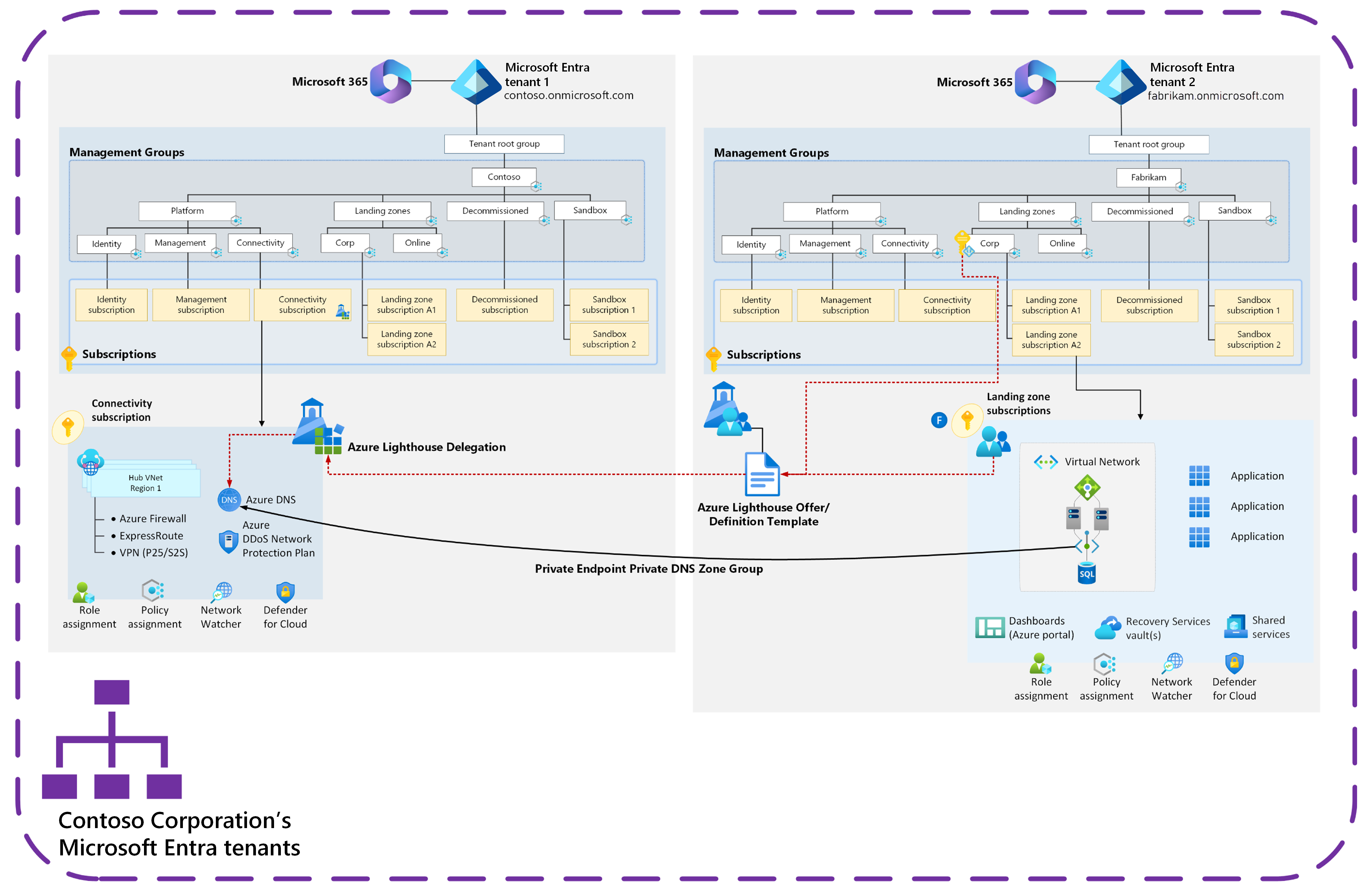Azure Lighthouse usage in Azure landing zones multi-tenant scenarios
Azure Lighthouse enables multi-tenant management with scalability, higher automation, and enhanced governance across resources. Azure Lighthouse can be adopted in Azure landing zone scenarios in single or multi-tenant architectures.
The following considerations and recommendations describe common scenarios for Azure Lighthouse in Azure landing zone deployments.
Considerations
- Azure Lighthouse isn't supported across Azure clouds, such as Azure public cloud to Azure Government cloud. For more information, see Cross-region and cloud considerations.
- Azure Lighthouse supports delegations of subscriptions or resource groups, not management groups or tenants. For a solution to onboarding multiple subscriptions within a management group, see Onboard all subscriptions in a management group. This policy follows the Azure landing zones design principle of policy-driven governance.
- For information about the limitations of role support with Azure Lighthouse, see Role support for Azure Lighthouse.
Recommendations
- See Azure Lighthouse in enterprise scenarios.
- If you're an ISV, see Azure Lighthouse in ISV scenarios.
- Use Azure Lighthouse in both directions between Microsoft Entra tenants to simplify management activities and reduce complex authentication and authorization scenarios. This action removes the reliance on Microsoft Entra B2B (Guest) accounts for user and workload identities, and it removes the need to have separate accounts for some activities.
- Use Microsoft Entra Privileged Identity Management (PIM) as part of your Azure Lighthouse delegations. For more information, see Create eligible authorizations.
- This feature requires Microsoft Entra ID P2 licensing but only from the source or managing Microsoft Entra tenant.
Azure landing zones scenario - Azure Lighthouse and Private DNS at scale
The following diagram is an Azure landing zone scenario where Azure Lighthouse is used across multiple Microsoft Entra tenants to assist with Private Link and DNS integration.
When you use Azure Lighthouse, Azure Policy for Private Endpoints Private DNS Zone is automatically linked in spoke Microsoft Entra tenants to the centralized Private DNS Zones in the hub Microsoft Entra tenant. For more information, see Private Link and DNS integration at scale.
When you use this architecture, application landing zone owners have access to make changes to Private DNS Zone via Azure Lighthouse delegation authorizations. This access is useful if a different approach is used to manage the Private Endpoints DNS configuration, rather than Azure Policy. For more information, see Private Link and DNS integration at scale.
Next steps
Feedback
Coming soon: Throughout 2024 we will be phasing out GitHub Issues as the feedback mechanism for content and replacing it with a new feedback system. For more information see: https://aka.ms/ContentUserFeedback.
Submit and view feedback for
